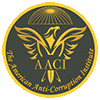Tempe, March 29, 2017
Technical Staff
This document is a part of The AACI series of anti-corruption resources. The contents of this document constitute an integral part of the CACM Review textbook that would be available in countries where the CACM will only be offered by exam.
Definition: A fraud and corruption prevention policy is a formal, written statement recording the entity's attitude and response to fraud and corruption.
The policy could be standalone or included within the code of ethics. It should state clearly what the organization expects from its employees regarding fraud and corruption.
A successful policy is one that:
- Embeds in it the “Perception of Detection” AND
- Implements a swift and consistent action when fraud or corruption is suspected or detected
Corruption Prevention Policy Benefits
The following is a "partial" list:
- Absence of confusion to what is fraud, corruption or misappropriation of assets
- Clear consequences for engaging in fraud and corruption
- Commitment of board of directors and management - the entity is not an easy target to fraud and corruption
Corruption Prevention Policy Benefits
Elements of Corruption Prevention Policy
Pre-requites for Effective Corruption Prevention Strategies, Plans, and Programs




